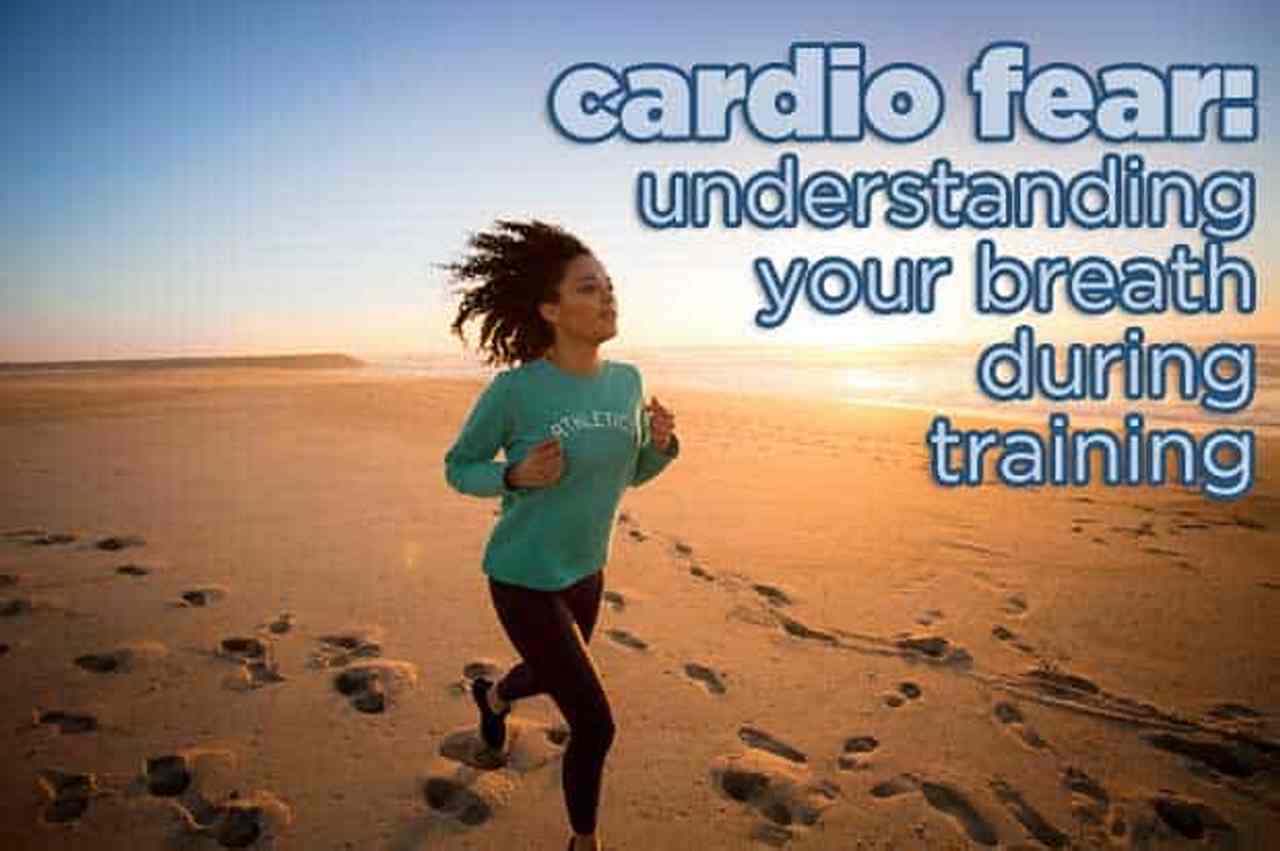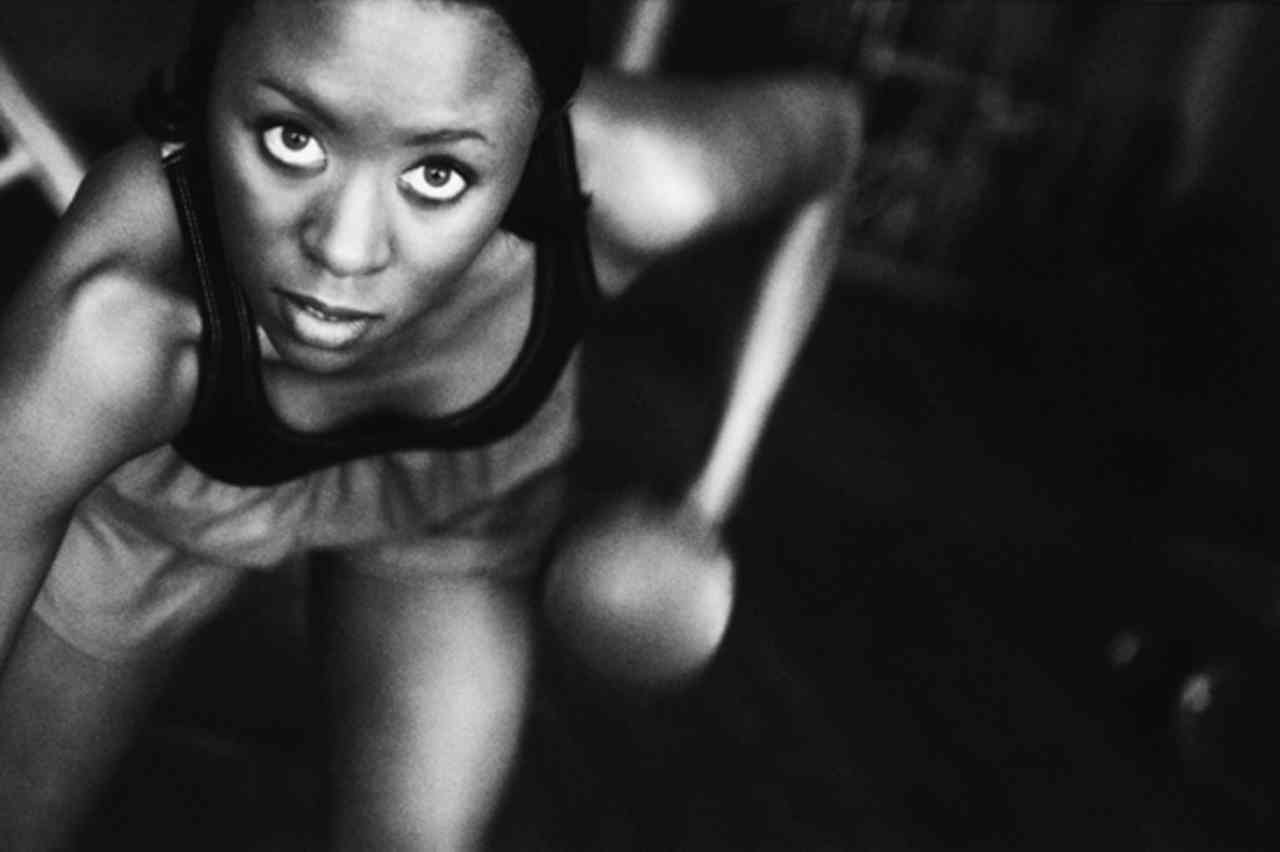I want to revisit the idea of “cardio fear” that I once wrote about in response to a question that a #bgg2wlarmy member submitted.
To start, I want to re-share the original question:
Q: In one of your posts you mentioned a fear of having your heart rate go to high. I’ve always felt uncomfortable and kind of afraid when my heart beats “too fast,” but how fast I consider too fast is completely in my head and based on a lifelong avoidance of exercise. Can you speak a little bit about how to overcome that and measure it properly?
Excerpted from Q&A Wednesday: Overcoming Cardio Fear – A Black Girl’s Guide To Weight Loss
While the post is full of advice that I still find valuable, I think I can go a little bit more in-depth right now with regard to understanding your breathing during exercise and why heavy breathing happens, why it isn’t something to fear, and how you can ensure that you’re protecting yourself.
Can I talk about animals for a second, though?
Weirdly enough, whenever Eddy’s off from work and Mini-me wants to watch TV, he turns on something wilderness-related. We don’t mind kids shows – we just mind the commercials – so, today, it was all about cheetahs and gazelles and what facilitates a cheetah’s ability to catch the gazelle, and what facilitates the gazelle’s ability to escape.
I have a point, here. I promise.
The documentary talked a lot about how the gazelle’s back legs are, essentially, spring-loaded to allow for an elongated stride (as opposed to taking lots of short and quick steps), allowing it to outlast the cheetah, who only has a max of about 13 seconds worth of energy in it before it has to stop chasing the gazelle.
Why does the cheetah only have an estimated 13 seconds? According to the documentary, the cheetah’s body is engineered to allow herself to throw her body forward at the rapid speed of about 4 strides per second, able to go from zero miles per hour to sixty miles per hour in only three strides, which basically amounts to one second flat. The cheetah’s nose is expanded wide enough to be able to take in the necessary air to get into the lungs and simultaneously keep the cheetah’s brain from the overheating that’s guaranteed to happen when you’re moving that fast. Her efforts will only be successful for about 13 seconds – if she runs at that speed for any longer, she could die immediately from overheating.
Unsurprisingly, human beings are a bit similar, here.
Cardio Panic: Understanding Your Breath During Exercise Share on X
Think about what the purpose of inhaling oxygen is, and what it does for you in the midst of intense activity. You inhale oxygen, and it enters your lungs, with the express purpose of being circulated through your blood stream to your muscles and organs. The breathing process helps facilitate the use of blood sugar, body fat and, ultimately, protein (read: lean body muscle mass and consumed protein) as energy sources – your muscles take in oxygen and spit out carbon dioxide (CO2), sending it back through the lungs to be exported into the air as you exhale.
If you are moving faster than your body is used to, the first thing to struggle is your breathing. If you have your own burst of energy and opt to explode into a burst of kinetic energy, your body has to catch up. Your heart pumps faster to get that oxygen moving throughout your body at a rate fast enough to keep up with the way the exercise is affecting you. Your lungs expand further, you breathe deeper, and your body gets more of what it needs.
This triggers the sweat glands all throughout the body to do their job of keeping you cool. A lot of different organs and muscles have to work to make way for the breathing necessary to get the job done, and a lot of heat is generated with all that energy burning. Because your body’s internal temperature likely shouldn’t reach higher than, say, 99º as a beginner (that’s my estimated guess based on some numbers I’ve seen, better represented here), your body will freak out and your sweat glands will begin the very important work of cooling your body down.
What happens while your heart is trying to catch up? Muscle that pumps and absorbs impact and facilitates rapid movement (yes, like the kind that makes your 15-minute-mile-as-a-beginner happen) can start to “burn” if that oxygen-CO2 cycle doesn’t continue. Sweat glands excrete a combination of water and sodium – hence, constantly hearing about why electrolytes are so important in endurance training; sodium is an electrolyte – from the millions of glands you have all over your body, and as the sweat reaches the air, it cools and helps bring down your temperature. If this process fails to happen adequately, you run the risk of heat stroke.
So, while yes, there’s an emotional feeling of “panic” involved with a new form of intense activity and the toll it can physically take, there’s also a very physiological cycle that happens and, if any of it is skimped on, it will physically cause that panicked feel as a way of forcing you to stop whatever you’re doing to focus on getting in enough oxygen and cooling your body down.
Cardio Panic: Understanding Your Breath During Exercise Share on X
As you can see, there’s a legit reason for that breathing struggle.
A more cardiovascularly-fit person will likely start sweating earlier, as the early sweating is a part of their body learning to prepare and “brace for impact” because it knows what’s coming. Their body has developed a system through consistent training regarding how to stay cool, stay energized, and push through.
So, if you’re experiencing “cardio panic,” how do you train yourself to stop?
For starters, with patience. As noted above, there are a lot of processes involved with thoroughly keeping your body from panicking during training (I didn’t even mention it all), and your body has a lot to adapt to the new activity. It’s okay for it to take a few months for you to get it.
Secondly, turn off the music and tune into your breathing. If you’re in a classroom environment, you may not have a choice, but you can focus on making sure you’re regularly inhaling and exhaling. If you’re in a class where there’s a teacher calling out a 4-count or 8-count move, alternate with deep inhales and shallow exhales to make sure that the oxygen is flowing and the sweat glands are triggered.
If you’re a runner, I have different advice to pass on to you from Budd Coates, author of Running on Air: The Revolutionary Way to Run Better by Breathing Smarter. Last year, at the Runner’s World Half Marathon, myself and a few other runners got to sit in on Coates’ presentation regarding breathing, and his advice was simple. There is research out there that implies that the leg on which you breathe is the leg that gets the benefits of the oxygen. If you land on your left leg while you’re inhaling, that’s the leg that benefits. Therefore, runners should breathe on a 5-count – inhale for three steps, exhale for two.
This jibes nicely with the advice I received from Golden Harper, Altra Running‘s founder and CEO, regarding running for beginners and big girls. Short, quick steps are not only easier on the joints, but are also easier for the body to learn how to spread oxygen throughout the limbs without immediate exhaustion. Striding like a gazelle when your body might not be lean enough to sustain that impact, force, or speed will only exhaust you faster, bring about that panicked feeling sooner, and ultimately decrease your confidence in being successful at training.
Cardio Panic: Understanding Your Breath During Exercise Share on X
This goes back to my original advice – you have to take the time to learn your body, and that starts with going sloooow, no matter how fast you think you can go from the jump. Take your time, focus on your breathing, and be patient. Before you know it, your cardio panic will be gone and you’ll be gliding like that gazelle across the trail!
Okay, maybe not quite like the gazelle, but pretty damned close!





